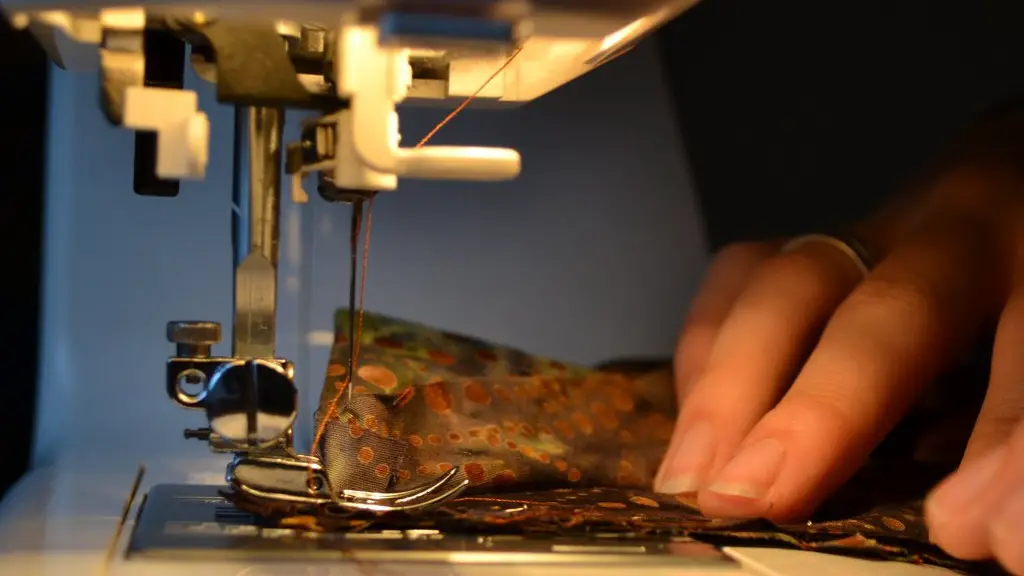Threading the Bobbin
The bobbin is an essential element of any Singer sewing machine. Without the bobbin correctly placed in the machine, it would be unable to sew. To understand how to correctly thread the bobbin, you first need to understand what it is and where the parts of the bobbin fit within the machine.
The bobbin is a metal or plastic ring, which houses a spindle and bobbin thread.The spindle holds the thread which is fed through the tension arm, to the needle and thread guide. The bobbin thread wraps around the upper thread to secure the fabric as it passes through.
Preparing the Bobbin
To ensure the bobbin is threaded accurately, it needs to be wound evenly with the correct thread and tension. Firstly, select the thread for the bobbin, making sure it is compatible with the material. Secondly, hold the spool of thread in the thread stand and wrap the bobbin with the thread. Feed the thread through the small eye of the bobbin thread guide, then onto the bobbin. Lastly, turn the handwheel wire to wind the bobbin evenly.
Placing the Bobbin in the Machine
To start, locate the bobbin case and remove the slide plate. Push the bobbin into the case and ensure the thread is running in the correct direction. Pass the thread through the tension spring, then back up to the upper thread slot. Lastly, press down on the upper thread, hold onto the tail of the bobbin thread and turn the handwheel, so that the lower thread feeds and passes through the tension control. That’s it!
Some Final Tips
When threading the bobbin, never cut the thread too short as this can cause tangles and jams. Secondly, the thread should be pulled firmly but not overly tight to maintain the tension, but also allow the thread to pass smoothly through the machine. Make sure the thread spins freely, without any signs of buckling or snaking.
The most important tip of all, do not forget to place the bobbin in its case after winding as this will save a massive headache later down the line.
Different Types of Singer Sewing Machines
Singer sewing machines come in a variety of types and models. The electronic machines are ideal for novices as they are easy to use and understand. The mechanical machines offer more control and are often preferred by experienced sewists and hobbyists. Lastly, the industrial models are designed for more professional use and have an expensive price tag.
Getting to Grips With Tension
Tension is one of the most important aspects of Singer sewing machines and getting the tension balance correct is key to ensuring the machine sews accurately. Typically, novice sewists will struggle to get the tension right, but with some practice, it is relatively simple to master. It is a common mistake to think that it only needs to be adjusted after threading the bobbin. In fact, the tension should be adjusted throughout the sewing process as the fabric and thread thickness changes.
Minimizing Problems with the Bobbin
It is normal for Singer sewing machines to experience issues with the bobbin. To minimize chances of this happening, use only good quality thread and check that it is the right type for the material. If the machine stops during sewing, check the bobbin tension and the threading before commencing sewing. to do this, look inside the bobbin case and make sure the thread is moving freely.
Tools to Help with Bobbin Placement
Having the correct tools to hand is essential if you want to successfully thread a bobbin. Investing in a good quality pair of wire-cutting scissors will help to ensure the thread is cut correctly and provide a neat and even finish. Threading tweezers are also very useful for tighter thread slots, as they allow the thread to be pulled easily through the tension arm.
Maintaining the Singer Sewing Machine
With regular use, Singer sewing machines need to be serviced and maintained. This is to ensure its performance and longevity, as well as to identify any potential problems that may occur. After each use, the machine should be cleaned, with particular attention being paid to the bobbin case and tension arm. With some basic cleaning tools, dust and lint can be easily removed without damaging any parts of the machine. Secondly, an oiling and servicing schedule should be created and adhered to.
Advice From Experts
If you are struggling to thread the bobbin, take advice from experts. There are numerous online resources available and, depending on the model of your machine, many qualified technicians and engineers who can offer valuable advice. It is important to remember, however, that the Singer sewing machine is a complex device and should not be attempted to be serviced by a novice.
Machine Safety
Finally, keeping the machine free from problems and harm is also essential. To ensure the safety of your machine, follow the manufacturer’s instructions and never attempt to diagnose and repair the machine yourself. It is important to use both the foot pedal and hand wheel with caution and always keep your hands clear of the needle when it is in operation.

